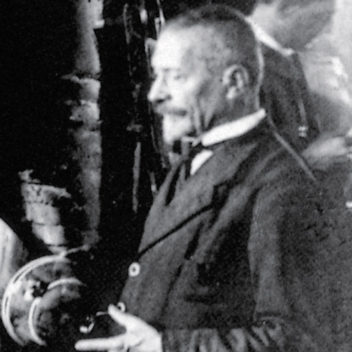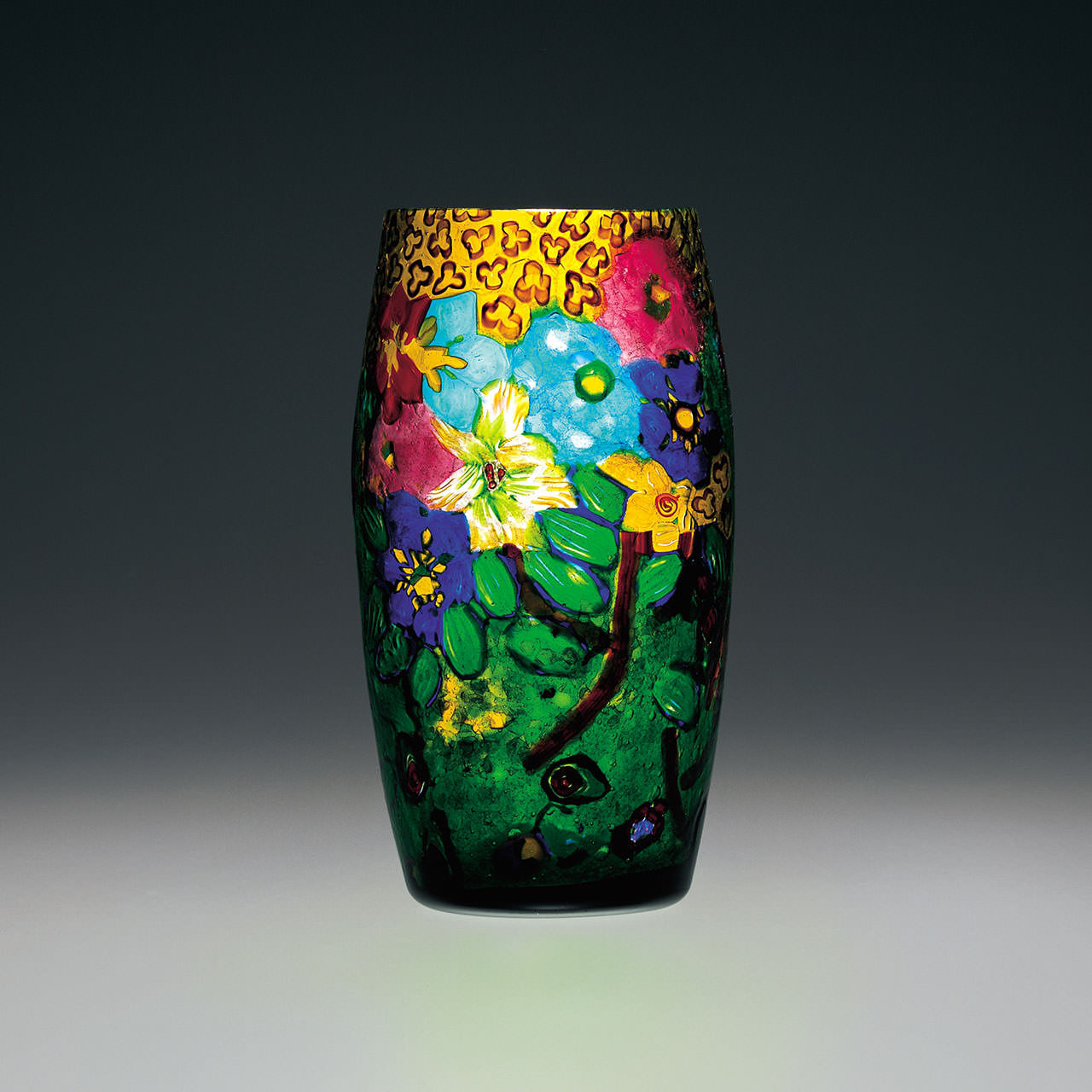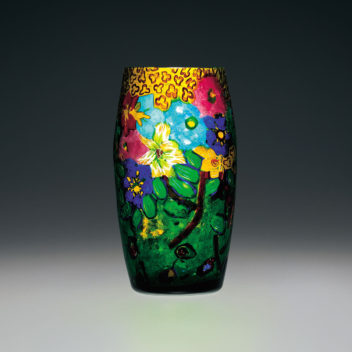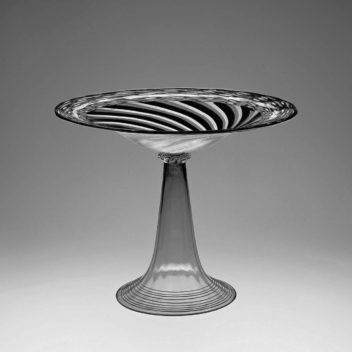
Benvenuto Barovier 1855–1932
Maestro and designer Benvenuto Barovier first worked as a glassblower for a company called Compagnia di Venezia e Murano (C.V.M.) where he was noted for his remarkable manual skills. In 1877, he and his brother Giuseppe were invited by Antonio Salviati to collaborate in his new furnace called Salviati dott. Antonio. When Salviati retired from the business of production in 1883, Benvenuto and Giuseppe bought the company where they worked as glassblowers and designers, eventually renaming it Artisti Barovier after Salviati’s death in 1890. Among Benvenuto’s many creations are some extraordinary pieces made in mosaico glass. Apart from the significant technical quality of these objects, one can perceive the passionate experimentation carried out by the maestro from Murano, who frequently used crushed glass to decorate his pieces. He and his brother received widespread critical acclaim at several exhibitions that took place at Cà Pesaro. After the transformation of the company into Vetreria Artistica Barovier & C. (1919), Benvenuto Barovier continued to participate actively in the furnace.


